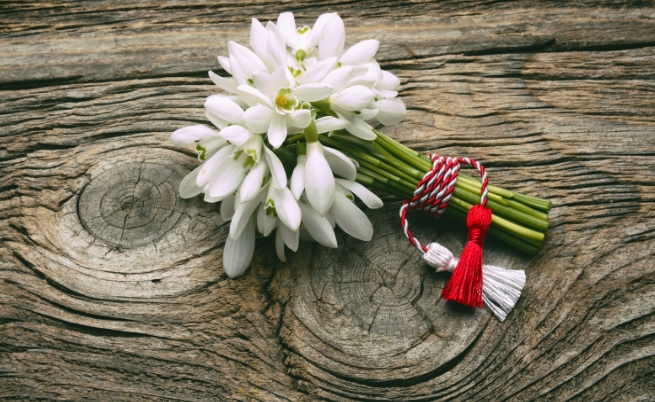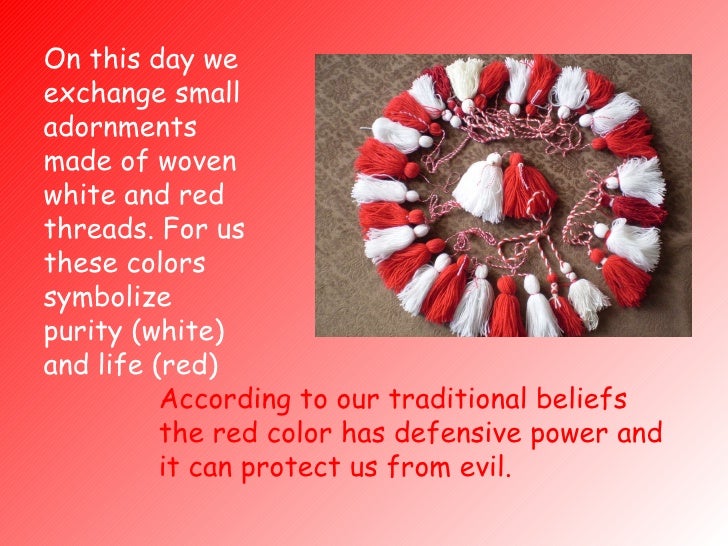

When the proto-Bulgarians reached the Danube plain, they were enchanted by its beauty. According to the ancients, it symbolized the infinity of life and immortality of the human spirit in the combination of white and red thread.Ī more recent legend links the martenitsa to the arrival of Asparuh's Bulgarians on the Balkan Peninsula. Orpheus himself decorated his lyre with martenitsas.

They always wore martenitsas during the spring, which symbolized the end of the cold and the awakening of nature to new life. How ancient this Bulgarian tradition is, hardly anyone can say.Īccording to an old legend, Thracians located on Bulgarian lands tied themselves martenitsas. For health, for joy and with a premonition of the end of winter and the onset of spring. It also resembles the German tradition of hanging empty eggs in blossoming trees during the (now Christian) Eastern folklore and the Persian tradition of hanging fruit in trees at midwinter.Every year on March 1, Bulgarians are decorated with white and red martenitsas. The Bulgarian tradition resembles folklore known in parts of Asia and South America, to wear a lucky bringing friendship bracelet around the wrist until it wears out. Some people then tie their martenitsa to a tree, others place it under a rock and based on what they find there the next morning guess what kind of a year this one would be. People wear martenitsa for a certain period, the end of which usually is connected with the first signs of spring -bird storks. Children usually compete who will get the most. The martenitsa comes in all shapes and sizes - from building packages to strings on a newborn's arm. In ancient times women’s wedding dresses were red. Red represents the woman and health: it is a sign of blood, conception and birth. Later, under the influence of Christian mythology it began to indicate integrity and virginity – white is the color of Christ.

The white color first symbolized man, the power light solar zone. In the small villages in the mountains people decorate their houses, kids and domestic animals. They are given away to friends and family and are worn around the wrist or on clothes.

"Martenitsi" are red and white coloured bands or figurines that symbolise health and happiness, a lucky charm against evil spirits. This story can also be found in German folklore, for instance in the "Frau Holle" or Mother Hulda legend. One says that on that day she does her pre-spring cleaning and shakes her mattress for the last time before the next winter - all the feathers that come out of it pour on Earth like snow - the last snow of the year. As folklore there are different versions of the Baba Marta tale. The tradition of giving friends red-and-white interwoven strings brings health and happiness during the year and is a reminder that spring is near.īaba Marta (Grandma March) is believed to be a feisty lady who always seems to be grudging at her two brothers, January and February, while the sun only comes out when she smiles. The Romanian holiday Mărţişor is related to Baba Marta.īulgarians celebrate on March 1 a centuries-old tradition and exchange martenitsi on what is called the day of Baba Marta. Baba Marta folklore is also present in southern and eastern Serbia where it is a reference as to a freezing weather change after a spring break. Her holiday of the same name is celebrated in Bulgaria on March 1 with the exchange and wearing of martenitsi. Baba Marta (Bulgarian: Баба Марта, "Granny March") is the name of a mythical figure who brings with her the end of the cold winter and the beginning of the spring.


 0 kommentar(er)
0 kommentar(er)
